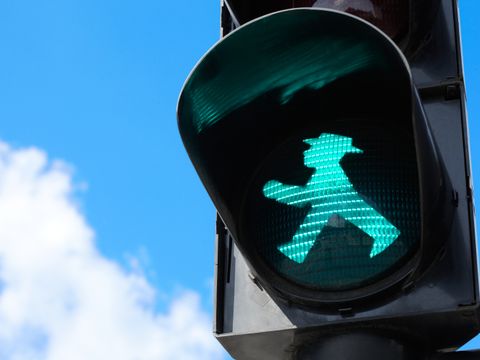[1] Hajna S, White T, Brage S et al. Descriptive epidemiology of changes in objectively measured sedentary behaviour and physical activity: six-year follow-up of the EPIC-Norfolk cohort. International Journal of Behavioural Nutrition and Physical Activity, 2018, 15:122.
[2] Krug S, Finger JD, Lange C, Richter A & Mensink GBM. Sport- und Ernährungsverhalten bei Kindern und Jugendlichen in Deutschland – Querschnittergebnisse aus KiGGS Welle 2 und Trends. Journal of Health Monitoring 2018, 3(2): 3-22.
[3] Patterson R, McNamara E, Tainio M et al. Sedentary behaviour and risk of all-cause, cardiovascular and cancer mortality, and incident type 2 diabetes: a systematic review and dose response meta-analysis. European Journal of Epidemiology 2018, 33:811-829.
[4] Ahlskog JE, Geda YE, Graff-Radford NR & Petersen RC. Physical exercise as a preventive or disease-modifying treatment of dementia and brain aging. Mayo Clinic Proceedings 2011, 86(9):876-884.
[5] Diehr P & Hirsch C. Health benefits of increased walking for sedentary, generally healthy older adults: using longitudinal data to approximate an intervention trial. Journal of Gerontology: Medical Sciences 2010, 65A(9):982-989.
[6] Ekelund U, Ward HA, Norat T et al. Physical activity and all-cause mortality across levels of overall and abdominal adiposity in European men and women: the European Prospective Investigation into Cancer and Nutrition Study (EPIC). American Journal of Clinical Nutrition 2015, 101:613-621.
[7] Lee I-M & Buchner DM. The Importance of walking to public health. American College of Sports Medicine 2008, S512-S518.
[8] Murtagh EM, Murphy MH & Boone-Heinonen J. Walking – the first steps in cardiovascular disease prevention. Curr Opin Cardiol. 2010, 25(5): 490-496.
[9] Hanson, S. & Jones, A. 2015. Is there evidence that walking groups have health benefits? A systematic review and meta-analysis. Br J Sports Med, 49: 710-715.
[10] Glover, T.D., Todd, J. & Moyer, L. 2022. Neighborhood walking and social connectedness. Frontiers in Sports and Active Living, 4:825224. doi: 10.3389/fspor.2022.825224
[11] Bundesministerium für Verkehr, Innovation und Technologie – BMVIT (Hrsg.) Fußverkehr in Zahlen – Daten, Fakten und Besonderheiten. Wien: 2012. Internet-Abruf hier
[12] Tcymbal A, Demetriou Y, Kelso A et al. Effects of the built environment on physical activity: a systematic review of longitudinal studies taking sex/gender into account. Environmental Health and Preventive Medicine 2020, 25:75.doi:10.1186/s12199-020-00915-z
[13] Herrmann T, Gleckner W, Wasfi RA, Thierry B, Kestens Y & Ross NA. A pan-Canadian measure of active living environments using open data. Health Reports 2019, 30(5):16-25. Statistics Canada, Catalogue no. 82-003-X.
[14] Tobin M, Hajna S, Orychock K et al. Rethinking walkability and developing a conceptual definition of active living environments to guide research and practice. BMC Public Health 2022, 22:450. doi:10.1186/s12889-022-12747-3
[15] Kwauka J. Perpedesindex 2015. Bewertung der Fußverkehrsqualität in deutschen Städten. Masterarbeit an der Fachhochschule Erfurt, 2015.
[16] Senatsverwaltung für Umwelt, Mobilität, Verbraucher- und Klimaschutz (Hrsg.) Die umweltgerechte Stadt. Umweltgerechtigkeitsatlas Aktualisierung 2021/22. Berlin: 2022.
[17] Gerike R, Hubrich S, Ließke F, Wittig S & Wittwer R. Tabellenbericht zum Forschungsprojekt „Mobilität in Städten – SrV 2018“ in Berlin Steglitz-Zehlendorf. TU Dresden: 2019.
[18] Gerike R, Hubrich S, Ließke F, Wittig S & Wittwer R. Tabellenbericht zum Forschungsprojekt „Mobilität in Städten – SrV 2018“ in Berlin. TU Dresden: 2019.



